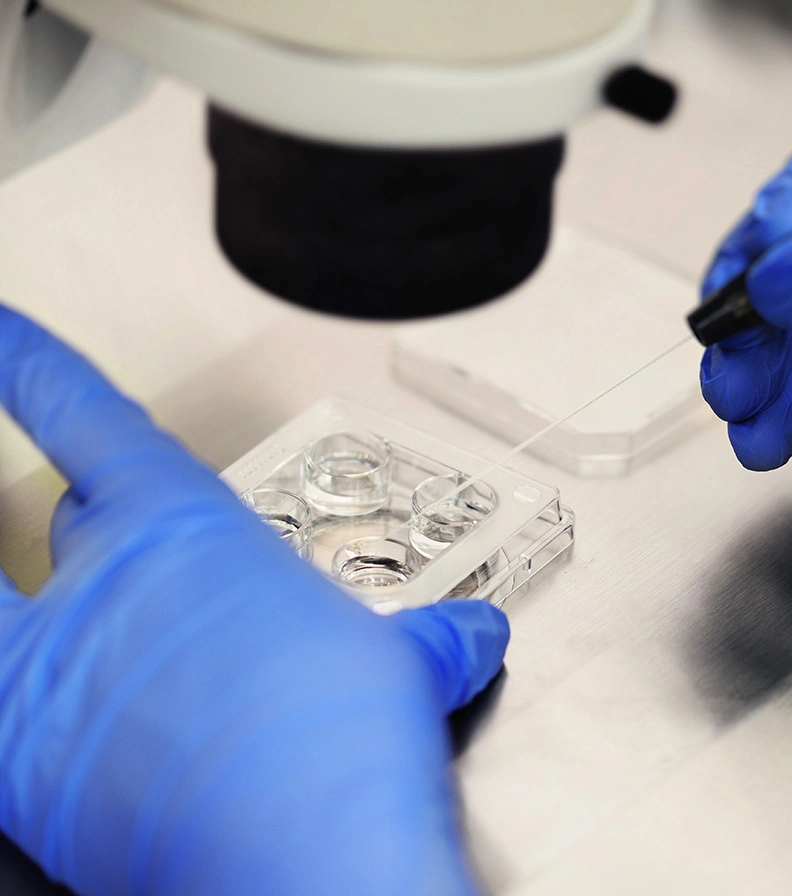In vitro fertilization (IVF) is a method of infertility treatment in which the sperm and the egg (oocyte) are combined in a laboratory dish for fertilization to occur.
During the IVF process, a patient’s cycle is manipulated and monitored with the use of fertility medications. These medications stimulate the ovaries to produce several mature eggs. When appropriate, the eggs are retrieved from the ovaries. At this time, the male supplies a sperm sample (or a frozen sample can be used). The eggs and sperm are placed in a dish and fertilized. After fertilization, the resulting embryo(s) are then transferred to the uterus to develop naturally. If multiple embryos are created, patients have the option to cryopreserve (freeze) embryos for future use. IVF treatment offers the highest rate of success of all the treatment options for infertility. It is also the most complex fertility treatment.
IVF is often recommended when a patient has experienced:
- Endometriosis
- Low sperm count
- Uterus or fallopian tube abnormalities
- Ovulation disorders or problems
- Presence of antibodies that harm sperm or eggs
- Sperm that are unable to penetrate the egg or survive in the cervical mucus
- Unexplained infertility
- Multiple failed IUI cycles
Success varies from patient to patient and even from cycle to cycle, depending on a variety of factors.

The IVF process includes:
- Ovulation Induction
- Egg Retreival
- Insemination and Fertilization
- Embryo Transfer
- Frozen Embryo Transfer (FET)
- Pregnancy Testing





